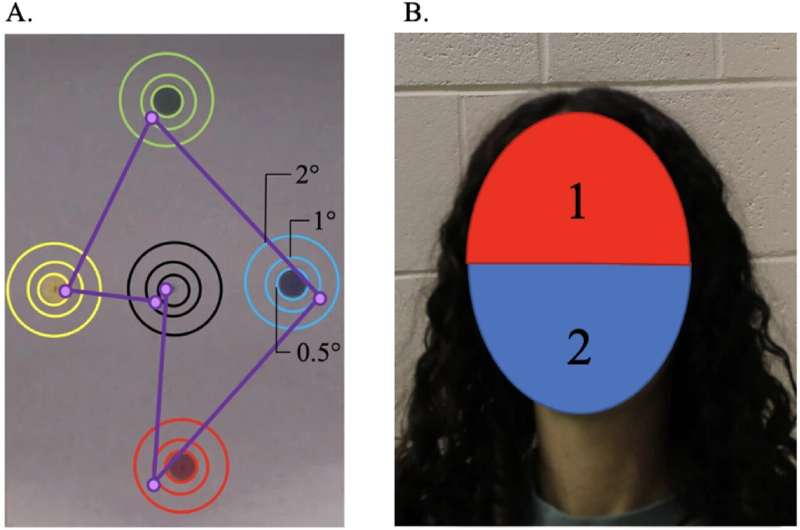This article has been reviewed according to Science X's editorial process and policies. Editors have highlighted the following attributes while ensuring the content's credibility:
fact-checked
peer-reviewed publication
trusted source
proofread
Eye-to-eye contact is rare but shapes our social behavior, study finds

When speaking to one another, much of the communication occurs nonverbally—through body posture, hand gestures, and the eyes. Our eye gaze during conversations, therefore, reveals a wealth of information about our attention, intention, or psychological states. But, there remains little scientific knowledge about the information that human eyes convey in interactions—is looking at others' faces enough, or does our communication require eye-to-eye contact?
Researchers from McGill University and Université du Québec à Montréal (UQAM) have studied the prevalence of eye contact by recording the eye gazing behavior in face-to-face dyadic interactions and found that although eye-to-eye contact occurred rarely, it communicated important messages that are vital for subsequent successful social behavior.
The study participants, who did not know each other beforehand, were paired and presented with an imaginary survival scenario that required the pairs to rank a list of items in order of their usefulness for survival, all while wearing mobile eye-tracking glasses. The researchers analyzed how often the participants looked at each other's eye and mouth regions.
The researchers also tested each participant individually for gaze following and linked the prevalence of different types of mutual looks during the interaction (i.e., eye-to-eye vs. eye-to-mouth) with the tendency to follow their partner's gaze.
"We discovered that participants spent only about 12% of conversation time in interactive looking, meaning that they gazed at each other's faces simultaneously for just 12% of the interaction duration," explains Florence Mayrand, a Ph.D. student in the Laboratory for Attention and Social Cognition (directed by Prof. Jelena Ristic from McGill's Department of Psychology), and lead author of the study. "Even more surprisingly, within those interactions, participants engaged in mutual eye-to-eye contact only 3.5% of the time."
More than meets the eye
During the interactions, the participants looked away more than at their partner's faces. When they did look at each other's faces, they looked equally often at the mouth and eye region and spent little time in mutual eye-to-eye contact. However, the time spent looking directly into each other's eyes predicted subsequent gaze-following. In other words, pairs who looked directly into each other's eyes were more likely to follow their partner's gaze afterward.
"This study is one of the first to show the prevalence of eye-to-eye looking during real-life interactions. We found that, surprisingly, direct eye-to-eye contact was quite rare during interactions, but that it is significant for social dynamics. The time we engage in eye-to-eye contact, even if for a few seconds, appears to be an important predictive factor for subsequent social behavior," concludes Mayrand.
This work opens several promising paths for future investigations, ranging from exploring the content of social messages conveyed by eye gaze to investigating the variability of eye-to-eye engagement with changes in interactive context and understanding if the quantity and content of speech influence gaze patterns during interactions.
The paper is published in the journal Scientific Reports.
More information: Florence Mayrand et al, A dual mobile eye tracking study on natural eye contact during live interactions, Scientific Reports (2023). DOI: 10.1038/s41598-023-38346-9
Journal information: Scientific Reports
Provided by McGill University




















